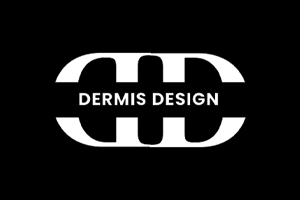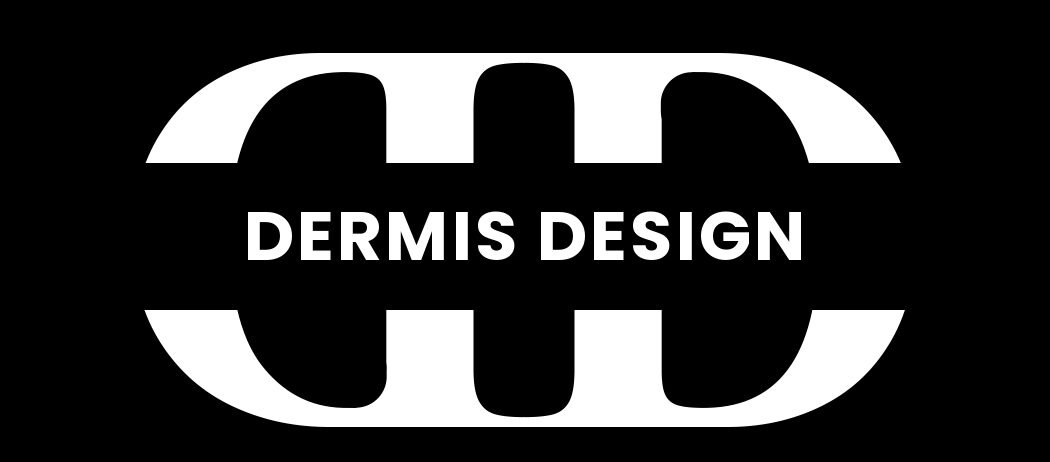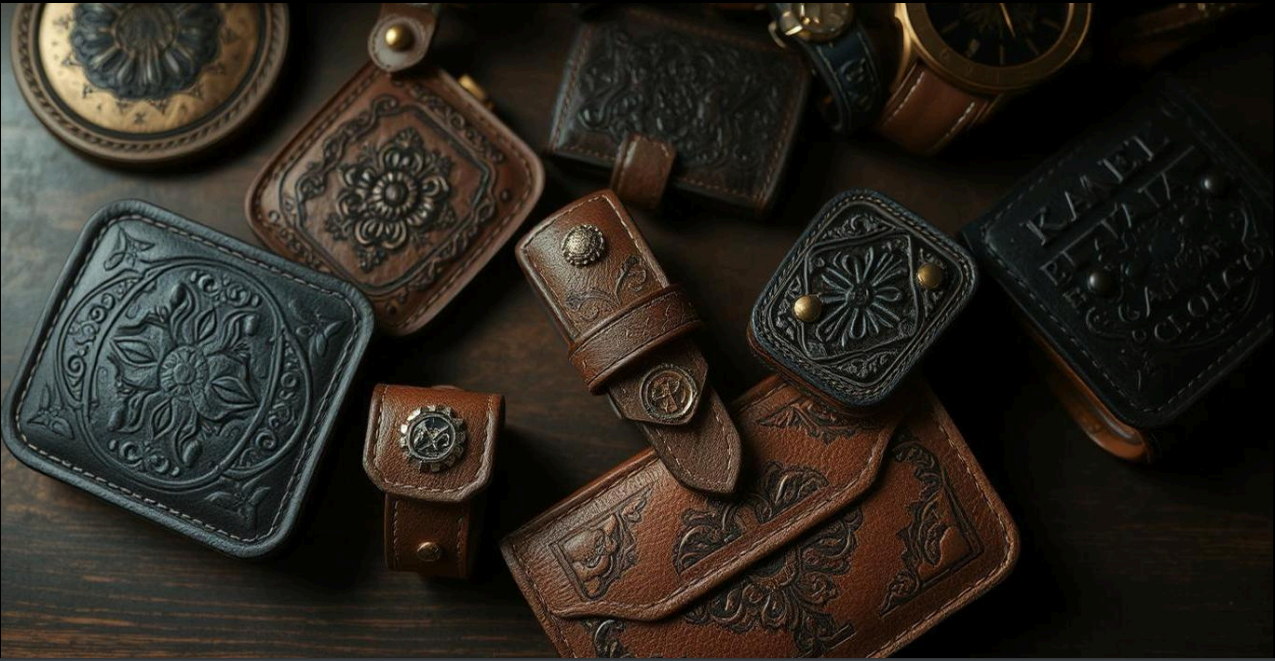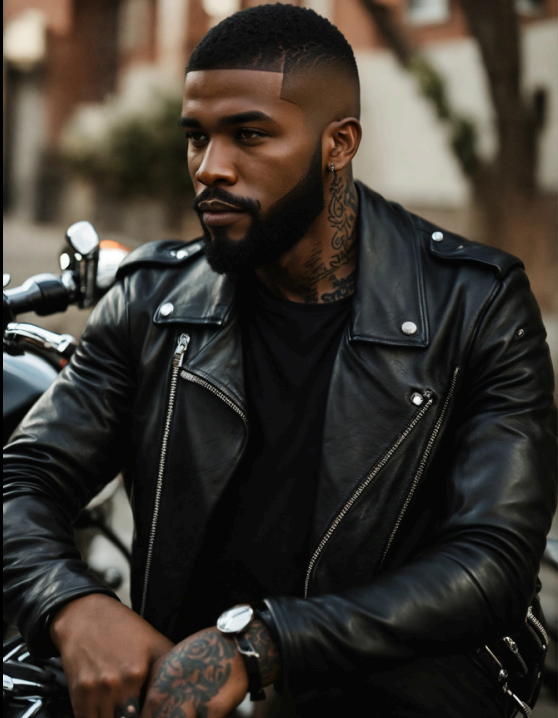Introduction
Leather is not just a material; it’s a symbol of quality, durability, and style. This guide delves into the history of leather, its distinctive
properties, the variety of types, and the expert techniques used in crafting leather goods. Whether you’re a seasoned leather aficionado or new to the material, this guide will serve as your complete reference to all things leather.
A Brief History of Leather
Leather has been cherished for its versatility, offering both comfort and durability in a range of textures, finishes, and colors. Its story dates
back thousands of years, with roots in ancient civilizations across the globe.
The craft of tanning leather was perfected by English guilds in the medieval era, making leather a prized and durable commodity. While
modern technology has advanced the process, leather’s enduring appeal and high quality remain unchanged.
In modern production, leather typically starts as a by-product of the food industry. The hides are carefully tanned to preserve their natural ualities, flexibility, and beauty. Leather is then expertly worked into a variety of products, from clothing to accessories, resulting in timeless, high-quality pieces that have been treasured for generations.
What Makes Leather Special
Leather is a durable and adaptable material derived from animal hides. The tanning process transforms these hides into long-lasting,
versatile products. Initially used for protective clothing and shelter, leather has since evolved into a favored material for everything from
fashion to furniture and car interiors. Its unique texture and natural appearance make it one of the most sought-after materials.
Why Choose Leather?
- lDurability & Strength: Known for its resistance to wear and long-lasting durability.
- lTimeless Appeal: Leather ages beautifully, gaining character with time.
- lVersatility: From fashion to furniture, leather’s adaptability makes it a favored choice across many industries.
Leather in Various Industries
- lFashion: Leather shines in jackets, shoes, and accessories, adding sophistication and texture.
- lFurniture: Leather upholstery offers both elegance and practicality.
- lAutomotive: Leather interiors elevate luxury vehicles, providing comfort and style.
- lMiscellaneous: Leather is also used in bookbinding, sports gear, and many specialized items.
Types of Leather
Leather is classified by the type of animal hide used and its unique characteristics:
- Cowhide: Strong and durable, often used for jackets and furniture.
- Sheepskin & Lambskin: Soft and light, ideal for high-end fashion.
- Goatskin & Calfskin: Fine-grained and supple, commonly used in accessories.
- Exotic Leathers: Unique options like deerskin and cordovan, each with distinct textures
Leather Grading
Leather grades are determined by quality, durability, and purpose:
- Natural Grain: Leather retains its natural surface, showing unique textures.
- Full-Grain: The most durable and high-quality layer, maintaining its original grain.
- Top-Grain: The outer layer is sanded for a smooth, refined appearance.
- Split Leather: The inner layer of the hide, often used for suede.
- Genuine Leather: Processed and treated for a more affordable option.
- Bonded Leather: Made from leather scraps and adhesive, less durable but cost-effective.
- Altered Leather: Sanded and embossed with a new texture to hide imperfections.
Leather Appearance and Finishes
- Natural vs. Processed: Some leather retains its raw form, while others are given textures or protective layers.
- Popular Finishes: Matte, glossy, pebbled, and distressed leathers offer variety for different tastes.
- Specialty Finishes: Finishes like oil-pull and aniline dye provide distinct textures and vibrant colors.
Leather Stitching Techniques
- Stitch Types: Saddle stitching, lock stitching, and others that ensure durability and style.
- Hand vs. Machine Stitching: Hand-stitched leather often shows more craftsmanship and durability than machine-made alternatives.
Tanning Methods
- Vegetable Tanning: A traditional, eco-friendly method that enhances the leather’s natural texture.
- Chrome Tanning: A faster method that offers flexibility, commonly used in fashion.
- Other Methods: Techniques like brain tanning and synthetic tanning produce unique results based on their use.
Leather Dyeing
- Aniline Dyeing: Penetrates the leather, offering rich colors while maintaining the natural feel.
- Pigmented Dyeing: Adds a protective color layer, enhancing vibrancy and durability.
- Impact on Texture: Dyeing influences the leather’s softness, longevity, and ease of care.
Aftereffects of Leather Use
- Aging and Patina: Leather develops a unique patina as it ages, enhancing its beauty.
- Care & Maintenance: Regular cleaning, conditioning, and proper storage keep leather looking its best for years.
Measuring Leather
- Thickness: Leather thickness varies by type, often measured in ounces or millimeters.
- Grain & Quality: The grain and thickness of leather influence its price, durability, and overall quality.
Conclusion
Leather continues to be one of the most enduring materials, valued for its strength, aesthetic, and adaptability. By understanding the different types, grades, and finishes, you’ll be equipped to make well-informed decisions for your leather purchases. Whether for fashion, furniture, or accessories, leather remains as iconic as it is practical.



